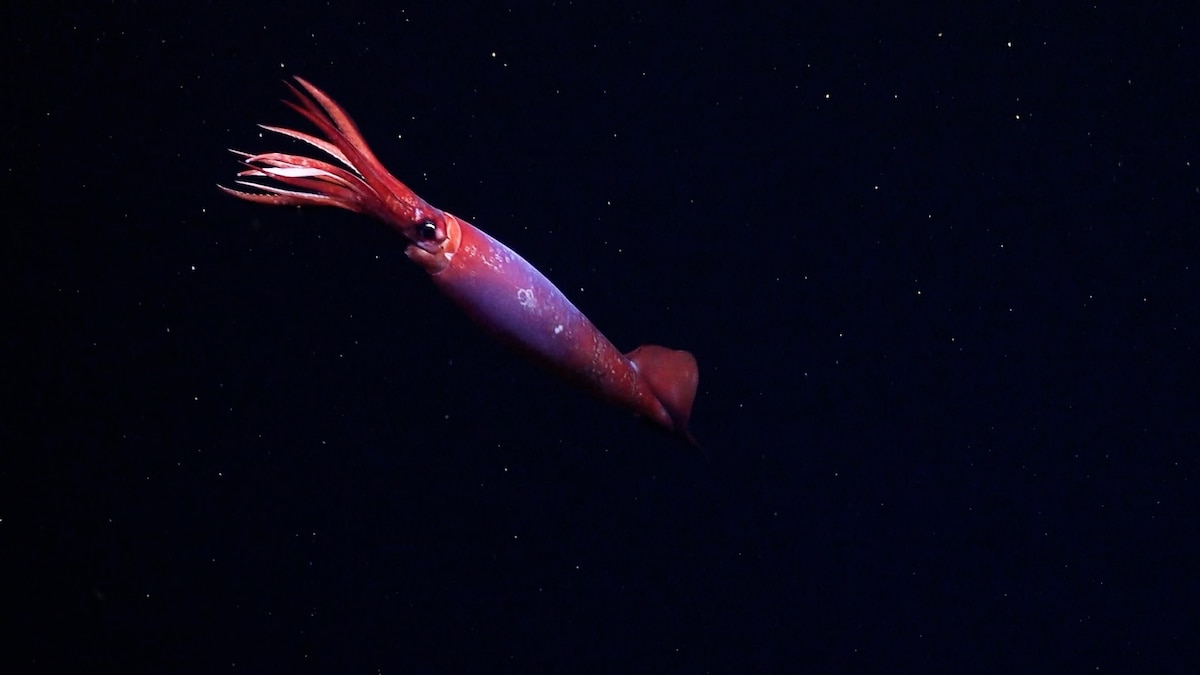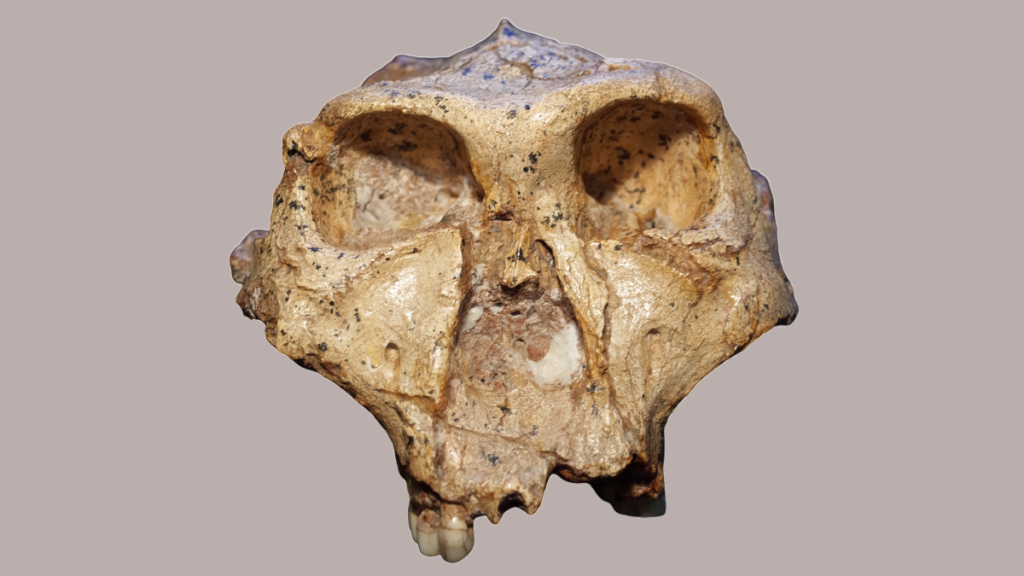Now Reading: We’ve never seen this rare squid alive in the wild—until now
-
01
We’ve never seen this rare squid alive in the wild—until now
We’ve never seen this rare squid alive in the wild—until now

Reporting in this article is presented by the National Geographic Society in partnership with Rolex under the National Geographic and Rolex Perpetual Planet Ocean Expeditions.
It was late on Christmas Eve and the frigid waters of the Southern Ocean’s Weddell Sea weren’t cooperating.
The scientists and crew onboard the Schmidt Ocean Institute’s ship R.V. Falkor (too), were planning to take the vessel’s remotely operated vehicle to the Powell Basin—an unexplored abyssal plain, which plummets to around 9,800 feet deep. The expedition was led by the National Geographic Society as part of their Rolex Perpetual Planet Ocean Expeditions and leveraged the institute’s ocean exploration tools.
“It was our mission critical,” says Manuel Novillo, a postdoctoral researcher at Instituto de Diversidad y Ecología Animal who was aboard the ship.
But the sea ice was so treacherous, Novillo and his fellow researchers had to postpone the launch. “The ice blocks were moving so fast, it would put all the ships in danger, so we had to rearrange everything,” Novillo says.
Reluctantly, they chose a new site at the outer edge of the Powell Basin for the next day.
Yet those setbacks and that new location would soon lead to a world first—on Christmas Day, Novillo and his team witnessed a squid that had never been seen alive: Gonatus antarcticus, an elusive cephalopod found only in the frigid waters around Antarctica.
Mission critical
As the expedition’s remote vehicle, SuBastian, slowly dropped 7,000 feet through the ocean’s inky twilight zone toward the seabed on Christmas morning, Novillo watched a live video feed streaming into the ship’s mission control room.
Suddenly, he spotted a shadow a few feet away. Intrigued, he asked the pilot to get closer. And “voila, it appeared,” he says.
There, in front of the rover, was a three-foot-long squid, which released a small cloud of greenish ink—perhaps startled by the vehicle.
“What are the odds?” Novillo says. “We were not supposed to be there and not at that precise moment.”
The team followed the squid for two or three minutes while it hung gently in the water. They used lasers to get an accurate measurement of its size, and the pilot turned down the lights so the team could get an idea of how this enigmatic animal lives in its natural environment.
Then, when the squid decided it had had enough, it shot away from the ROV and disappeared from view.
Identifying Gonatus antarcticus
The team aboard the ship shared the footage with Kat Bolstad, head of the Auckland University of Technology’s Lab for Cephalopod Ecology and Systematics—fondly known as the AUT Squid Squad.
“My very favorite thing is when someone sends me a clip and says, ‘who’s this squid?’” she says.
Bolstad identified the three-foot-long squid as Gonatus antarcticus—the Antarctic Gonate squid.
“This is, to the best of my knowledge, the first live footage of this animal worldwide,” she says.
Before now, the species was only known from carcasses in fishing nets or when the squids’ beaks were found in the stomach of fished marine animals.
To confirm the ID, Bolstad was looking for a specific feature: “On the ends of the two long tentacles, the presence of a single, very large hook,” she says.
You May Also Like
Sure enough, there it was on video. “It’s not consistently visible,” she says, “but it is definitely there.”
Finally visible alive and in its natural habitat, scientists could examine the squid’s unique characteristics and form theories about its habits.
“The impressive tentacle hooks are probably used for grasping and subduing prey during ambush predation,” wrote Alex Hayward, senior lecturer at the University of Exeter in England, in an email. Hayward was not involved in the expedition.
Yet we still don’t know much about the Antarctic squid.
“Daily life is probably a mixture of an active predatory lifestyle, trying to catch fish to eat, whilst avoiding voracious predators,” says Hayward.
Deep-sea squids have good eyesight and usually avoid the lights of a research vessel, making the chance encounter all the more remarkable.
“We want to see them, but they probably don’t want to see us most of the time,” she says.
The curious life of a deep sea squid
The squid had scratches on its arms and fresh-looking sucker marks on its mantle.
“Maybe there’s been some kind of recent predation attempt that this squid has managed to survive,” says Bolstad, although it’s unclear exactly which species was involved in the epic battle.
Hayward wonders if the culprit was a juvenile colossal squid, which has an overlapping range and depth.
(See the first ever video showing the colossal squid alive and in its natural habitat.)
The researchers couldn’t confirm the squid’s sex from the footage but, if it’s female, “she’s nearly twice as big as some other females that have completed their lifecycle,” Bolstad says.
Towards the end of their lives, squid in this family become pale and their tissues break down. “They’re getting kind of puffy,” she says. “Kind of ragged.”
But this squid seemed to be “in pretty good shape,” says Bolstad. “The coloration is still really strong.”
Could this be a male, suggesting that older males don’t deteriorate like females do? Or is the animal we know as Gonatus antarcticus made up of more than one species? The experts don’t yet know.
This exciting discovery highlights how much there is to learn about the ocean, particularly in the relatively unexplored polar regions.
“In the deep sea, there’s always a good chance you’re seeing something for the first time,” says Bolstad. “The potential for discoveries and exploration is pretty much limitless.”























